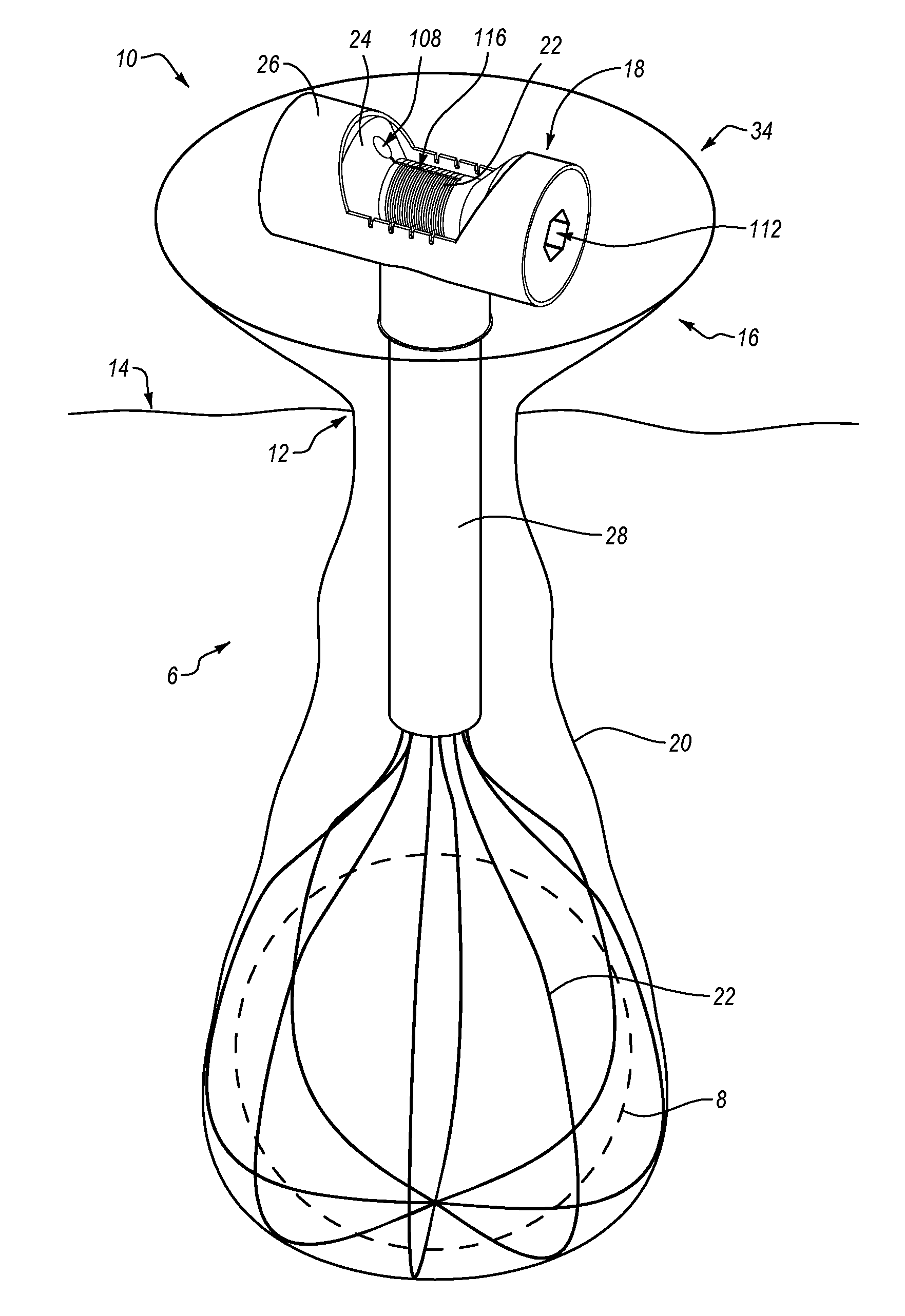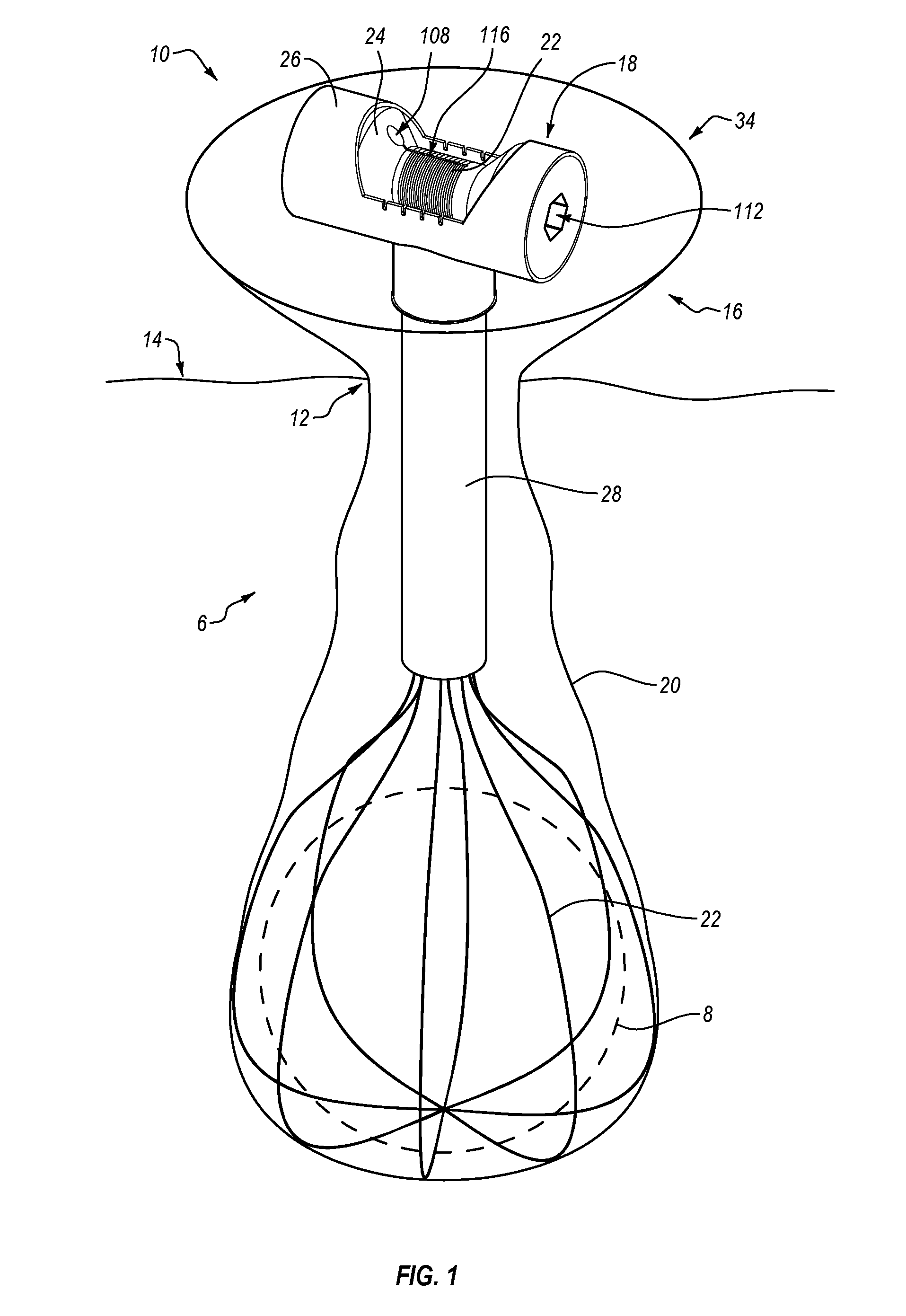Organic specimen orientation, segmentation and retrieval device
a tissue specimen and organ technology, applied in the field of minimally invasive surgery, can solve the problems of limiting the orientation of tissue specimens, affecting the direction of field and patient care, and reducing the risk of potentially spreading or seeding an undiagnosed cancer, so as to reduce the upward movement of tissue samples, prevent the spread of cancer, and ensure the orientation of tissue samples.
- Summary
- Abstract
- Description
- Claims
- Application Information
AI Technical Summary
Benefits of technology
Problems solved by technology
Method used
Image
Examples
Embodiment Construction
[0027]Before describing the present disclosure in further detail, it is to be understood that this disclosure is not limited to the description of the particularly exemplified systems, methods, and / or products that may vary from one implementation to the next. Thus, while certain implementations of the present disclosure will be described in detail, with reference to specific configurations, parameters, features (e.g., components, members, elements, parts, and / or portions), etc., the descriptions are illustrative and are not to be construed as limiting the scope of the claimed invention. In addition, the terminology used herein is for the purpose of describing the implementations, and is not necessarily intended to limit the scope of the claimed invention.
[0028]Unless defined otherwise, all technical and scientific terms used herein have the same meaning as commonly understood by one of ordinary skill in the art to which the present disclosure pertains.
[0029]Various aspects of the p...
PUM
 Login to View More
Login to View More Abstract
Description
Claims
Application Information
 Login to View More
Login to View More - R&D
- Intellectual Property
- Life Sciences
- Materials
- Tech Scout
- Unparalleled Data Quality
- Higher Quality Content
- 60% Fewer Hallucinations
Browse by: Latest US Patents, China's latest patents, Technical Efficacy Thesaurus, Application Domain, Technology Topic, Popular Technical Reports.
© 2025 PatSnap. All rights reserved.Legal|Privacy policy|Modern Slavery Act Transparency Statement|Sitemap|About US| Contact US: help@patsnap.com



